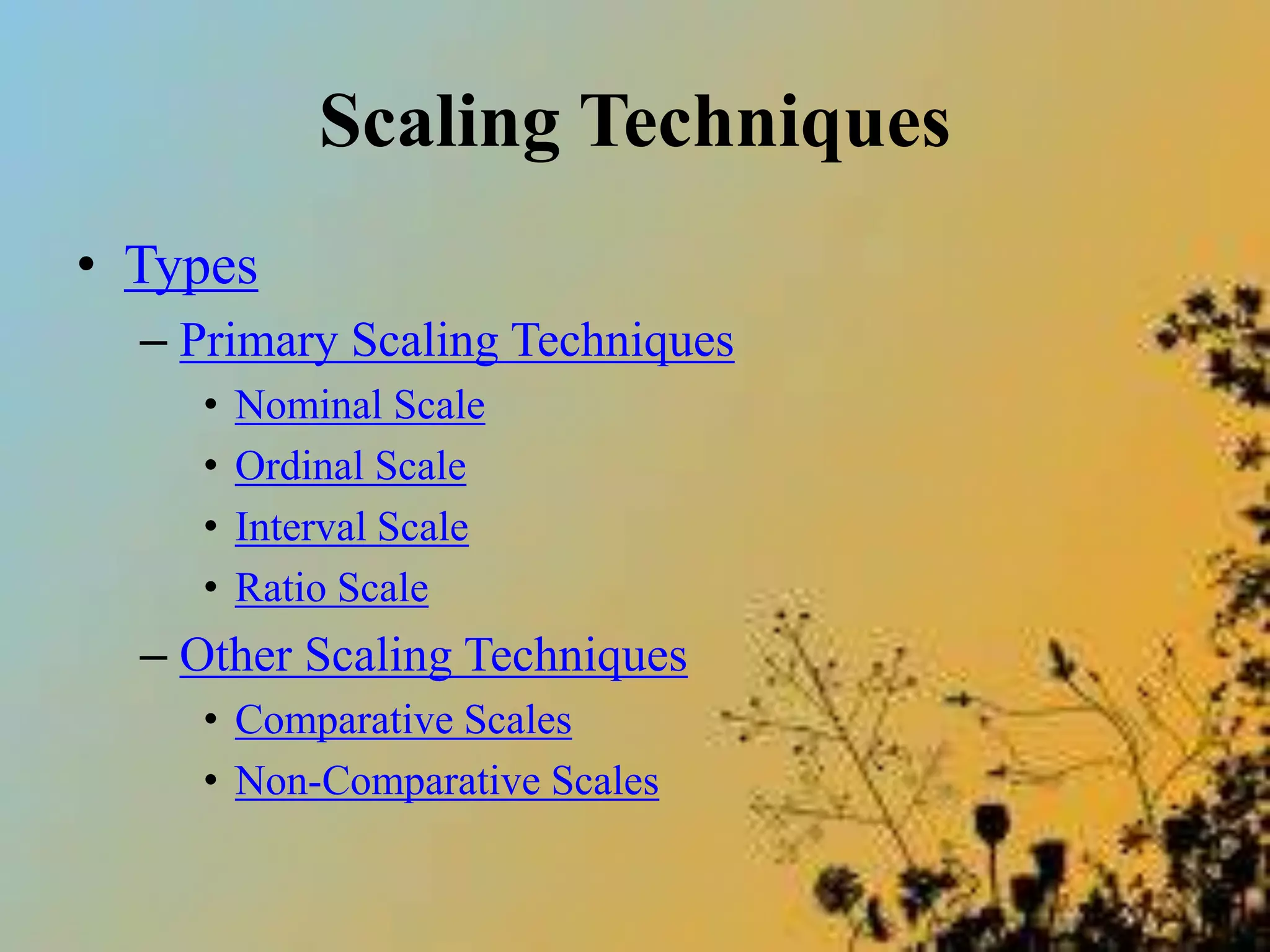The document discusses measurement and scaling techniques in research, focusing on different levels of measurement such as nominal, ordinal, interval, and ratio scales. It highlights the importance of clear measurement guidelines and examples of how each scale can be applied in marketing research. Additionally, it includes case studies of two companies facing challenges in their respective markets and seeking strategic decisions for improvement.
















